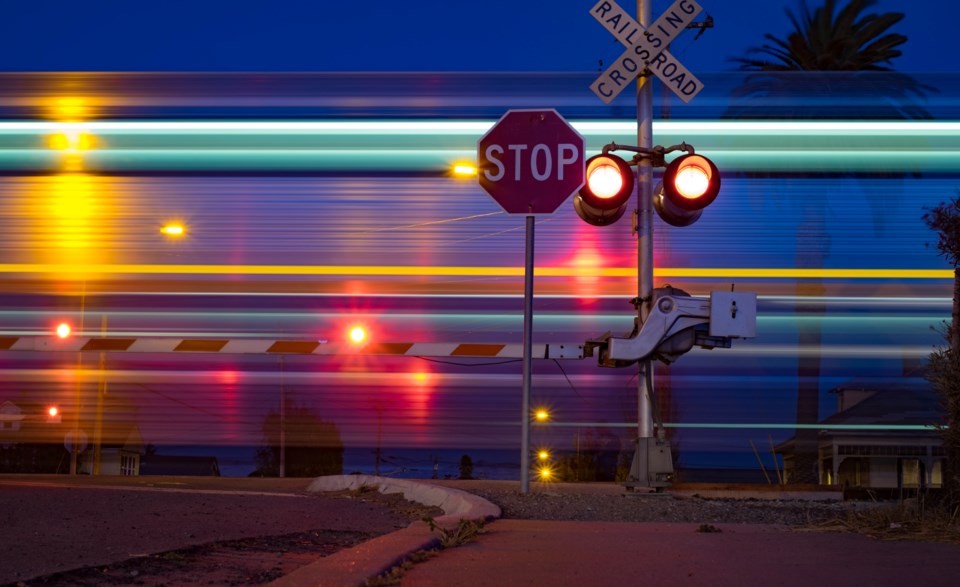A fraction of the proposed $371.78 million budget to run the city next year includes funding to continue the quiet zone project that aims to silence BNSF Railway trains as they churn through Longmont’s 17 railroad crossings.
The budget calls for Longmont to spend $2.17 million to create the quiet zones, which usually involves erecting safety equipment at the crossings to keep trains from sounding their horns, said Jim Angstadt, the city’s director of engineering services.
“Train noise has really become an issue in Longmont, especially in the past 10 to 15 years as the city has grown and houses are closer to train crossings,” Angstadt said.
Quiet zone funding was one of the capital projects highlighted Tuesday night by City Manager Harold Dominguez, who presented the proposed budget for the first time to city council.
Other highlights included spending $7.5 million to install as many as 2,000 new electric meters, $19.2 million for the replacement of Price Park water storage reservoir with a new 8 million-gallon underground tank, and an $11.6 million expansion of the Nelson-Flanders Water Treatment Plant.
The overall proposed budget for 2021 is a 5.05 % increase from the $353.91 million budget for 2020, Dominguez said. The $17.87 million increase is driven by the costs of capital improvement projects planned for next year, which have increased by more than $32 million, Dominguez said in a report to city council.
“There are several significant projects in the electric and broadband enterprise and the water enterprise (projects) that are responsible for the increase,” Dominguez told council. “Without them, the overall 2021 budget would be below the original 2020 budget.”
COVID-19 and a weakened economy have hurt the city budget, he said. Projected minor growth in sales and use tax revenues allow operating funds to maintain most service levels. But the city cannot expand services or provide market-based pay raises to employees, he said, adding Longmont continues to experience business and residential growth.
Housing expansion in Longmont has brushed up against a Federal Railroad Administration rule that requires trains to blow their horns at all crossings that don’t satisfy federal safety requirements, according to a city website dedicated to quiet zones.
The BNSF Railway corridor passes through Longmont and is part of residents’ daily life, according to the city. Those who live within a mile or so of the railroad lines experience as many as nine train horns a day and eight a night, according to the city.
To help quell the noise, the U.S. Department of Transportation in February awarded Longmont a $4 million grant to create quiet zones and enhance safety and to bolster Longmont’s $8 million Railroad Crossing Safety Program.
The $2.17 million proposed in the 2021 budget will be part of Longmont’s matching funds for the grant, Angstadt said.
The city is now working with BNSF on designs of the crossings and plans to put the projects out to bid by early next year, Angstadt said.
There also are regulatory hurdles to manage, he said, adding there are several components to installing a railroad crossing that is truly a quiet zone.
There are double crossing guards and warning lights to put in to alert drivers a train is coming.
“Another way to provide a safe zone at a crossing is to simply shut that crossing down,” Angstadt said. “That’s the least expensive, but the most controversial.”
The city plans several public hearings in September to discuss the proposed budget, including a Sept. 8 “budget tutorial,” prior to the budget’s adoption slated for council’s Oct. 27 and Nov. 10 meetings.


